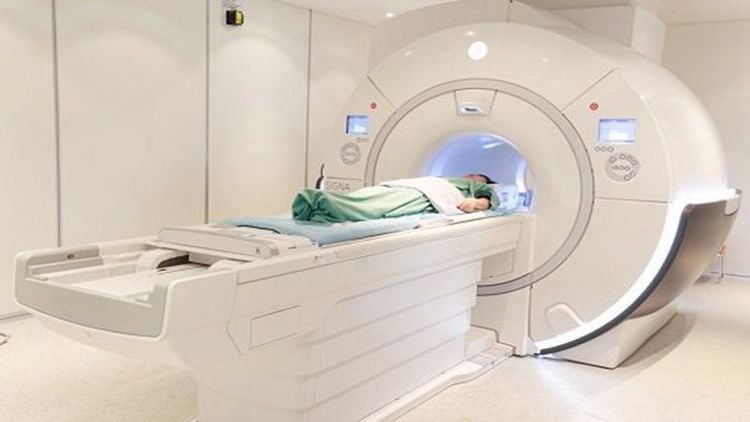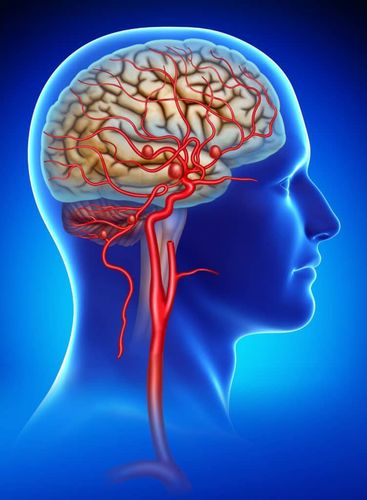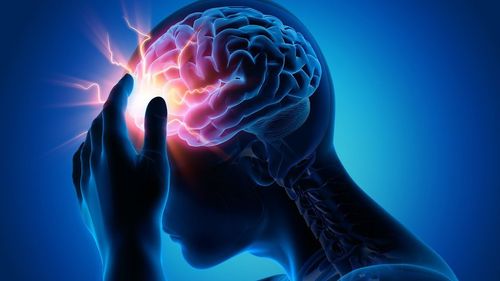This is an automatically translated article.
Brain aneurysm is now likened to a ticking time bomb, which can be life-threatening at any time if it bursts. Therefore, it is very necessary to understand the dangerous complications of a ruptured cerebral aneurysm as well as how to treat - treat - take care of the patient.
1. Brain Aneurysm Overview
Brain aneurysm (also known as cerebral aneurysm, intracranial aneurysm...) is a concept that refers to the development of aneurysms in cerebral blood vessels. These vesicles often form at weak vascular sites such as branching vessels and will gradually expand.
When the aneurysm becomes larger, along with the thinning of the vessel wall, the rupture of a cerebral aneurysm will occur. When this happens, blood will leak into the space around the brain. This condition, also known as subarachnoid hemorrhage (SAH), is extremely dangerous, even life-threatening.
2. Unforeseen health risks from ruptured cerebral aneurysms
Cerebral aneurysms can be fatal with the following troubling figures:
Approximately 10% of patients with brain aneurysms die before they can be detected and taken care of. Patients who do not detect the disease in time, have about 50% of cases die within 1 month. In addition, cerebral aneurysms can also increase the risk associated with cerebral artery spasm and lead to stroke. Some other complications include:
Hydrocephalus, thereby causing impaired circulation of cerebrospinal fluid. Hyponatremia (usually due to brain injury)

Bệnh phình động mạch não gây ra nhiều biến chứng nguy hiểm như đột quỵ
3. Early detection of cerebral aneurysms like?
3.1 Clinical symptoms of cerebral aneurysms
Brain aneurysms have very few obvious symptoms if the aneurysms have not ruptured or leaked. Usually, patients may experience some early symptoms as follows:
Headache and behind the head, above the eyes... The pain can be mild or severe depending on the condition of the aneurysms. Brain. Visual disturbances, often double vision or blurred vision. Seizures... However, these symptoms can be common manifestations of many neurological diseases. Therefore, some of the following risk factors will help patients easily determine whether they are likely to have cerebral aneurysms:
People with atherosclerosis / hardening of the arteries. Age: brain aneurysms are easy to develop in adults and elderly people (age group from 35 to 60 years old). Gender: Women are more likely to get the disease due to the decline in estrogen levels during menopause. Family history: if someone in your family has been diagnosed with a dilated cerebral artery/brain aneurysm..., you are also at high risk for the same condition. The patient has abused drugs, stimulants or alcohol. There is a head injury. There is a defect in the cerebral arteries (congenital or genetic...) Congenital aortic stenosis (coarctation).
3.2 Diagnostic methods for cerebral aneurysms
When the rupture of the cerebral aneurysm has not occurred, the diagnosis of the disease through clinical manifestations is not possible. Therefore, when in doubt, the doctor will assign the patient to perform a number of tests to get more accurate results, including:
Cerebral angiogram: provides an overview of the brain vessels to detect showing problems related to blood vessels and blood flow. Usually, the doctor will dye the contrast dye through the catheter and take X-rays of the blood vessels. Computed tomography (CT/CAT scan): uses X-rays and a computer to create detailed images of the body. The CT scan allows a more detailed view of the bones, fat, muscles and internal organs, thus helping to detect abnormalities and pinpoint the exact location of the aneurysm. broken or leaked or not. Magnetic resonance imaging (MRI): uses radio frequencies and computers to create detailed images of organs and structures inside the body, helping to detect every small change in brain tissue, thereby helping to diagnose. exact aneurysm. Magnetic Resonance Angiography (MRA): This is a test that combines MRI and intravenous contrast dye to make blood vessels clearer, used by doctors to easily evaluate blood vessels than.

Chụp MRI giúp chẩn đoán bệnh phình động mạch não
4. When do you need to go to the hospital?
As mentioned above, the disease only shows the most symptoms when the brain aneurysm ruptures. At this stage, if you do not detect it in time and bring the patient to the hospital, the risk of death is very high.
Some of the following signs indicate that a brain aneurysm has ruptured or leaked:
It begins with intense, bad and persistent pain; stiff neck; Nausea, vomiting; Loss of consciousness or drowsiness, coma; Exceptionally sensitive to light; Loss of balance, back and leg pain. Therefore, in the above situation, the patient needs to be immediately taken to the emergency hospital.
It can be said that the rupture of a cerebral aneurysm will leave serious complications, threatening the patient's life and life. Therefore, it is necessary to regularly check your health, if you are in a high-risk group, you should clearly explain it to your doctor for appropriate check-ups.
International General Hospital is currently a prestigious medical facility across the country with a system of advanced and modern equipment that helps patients easily detect many dangerous diseases accurately. The team of doctors is highly qualified and reputable in the industry. Here, patients are examined and consulted enthusiastically, the hospital space is clean and smart.
To register for examination and treatment at Vinmec International General Hospital, you can contact the nationwide Vinmec Health System Hotline, or register online HERE.
References: hopkinsmedicine.org, healthline.com, medicinenet.com













